The Red Sea is home to a rich variety of bird species. From colorful parrots to majestic pelicans, the birds of the Red Sea provide a stunning backdrop to the vibrant marine life of the region.
In the coastal regions, one can find a variety of waterfowl species such as ducks, cormorants, and herons. Further inland, the desert is home to species such as the larks, bustards, and wheatears.
The region’s many islands also contain their own unique avifauna, such as the Arabian stone-curlew and the Socotra cormorant. The Red Sea also hosts a great variety of migratory birds, which can be seen in great numbers during the winter months.
Whether you are an experienced birder or just looking to enjoy the beauty of the birds of the Red Sea, there is something for everyone.
1. Frigatebird
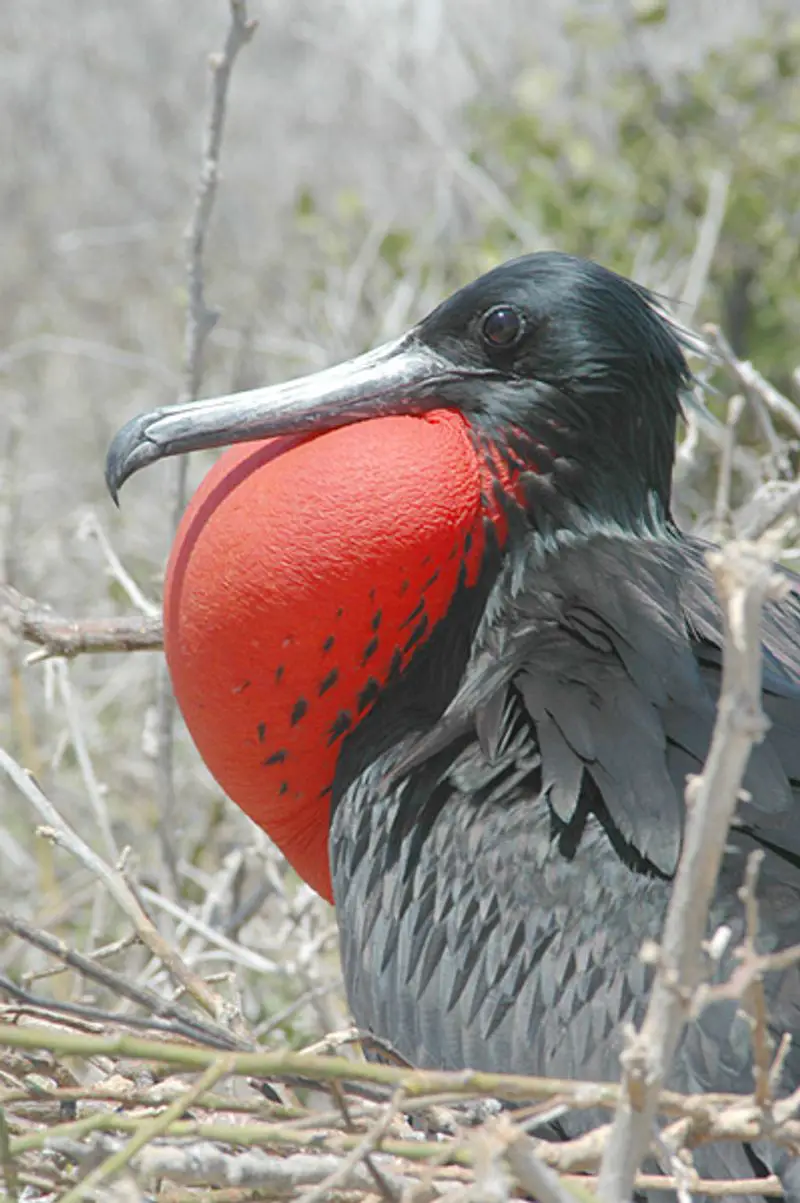
Frigatebirds are a type of seabird belonging to the family Fregatidae, found in all tropical and subtropical oceans. The five extant species of Frigatebird are all classified in the same genus, Fregata.
They are easily recognizable due to their predominantly black plumage, long, deeply forked tails and long hooked bills.
Frigatebirds are also known for their impressive aerial abilities, using their long wings and tails to soar and glide effortlessly over the surface of the ocean.
They are capable of soaring for hours without flapping their wings and can reach speeds of up to 95 km/h during their dives. They feed mainly on fish, squid and crustaceans, which they snatch from the sea surface, and can also scavenge from other seabirds.
Frigatebirds are highly social and often congregate in large flocks, especially near breeding colonies. They are also long-lived, with some species living up to 40 years in the wild.
| Kingdom | Animalia |
| Phylum | Chordata |
| Class | Aves |
| Order | Suliformes |
| Family | Fregatidae |
| Genus | Fregata |
2. Red-billed Tropicbird
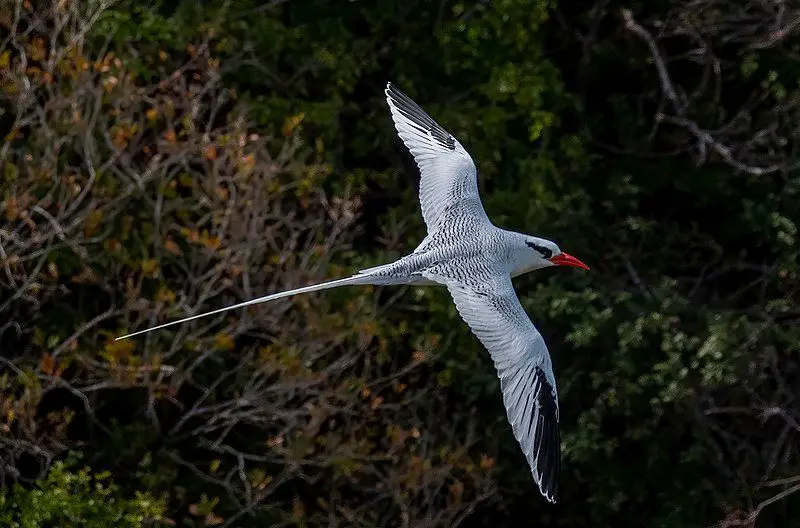
The red-billed tropicbird is a species of seabird that is found in tropical oceans. It is a member of the tropicbird family, which consists of three closely related species.
This bird has a unique appearance, with its mostly white plumage being punctuated by black markings on the wings and back, as well as a black mask. The most striking feature of this bird, however, is its bright red bill, which is the source of its common name.
The red-billed tropicbird is superficially similar to a tern, but its plumage and bill are much more vibrant and distinguish it from most other seabirds.
This species of bird is found in warm, tropical waters around the world, and is easily recognized by its bright colors and stunning features.
| Kingdom | Animalia |
| Phylum | Chordata |
| Class | Aves |
| Order | Phaethontiformes |
| Family | Phaethontidae |
| Genus | Phaethon |
| Species | P. aethereus |
3. Cormorant
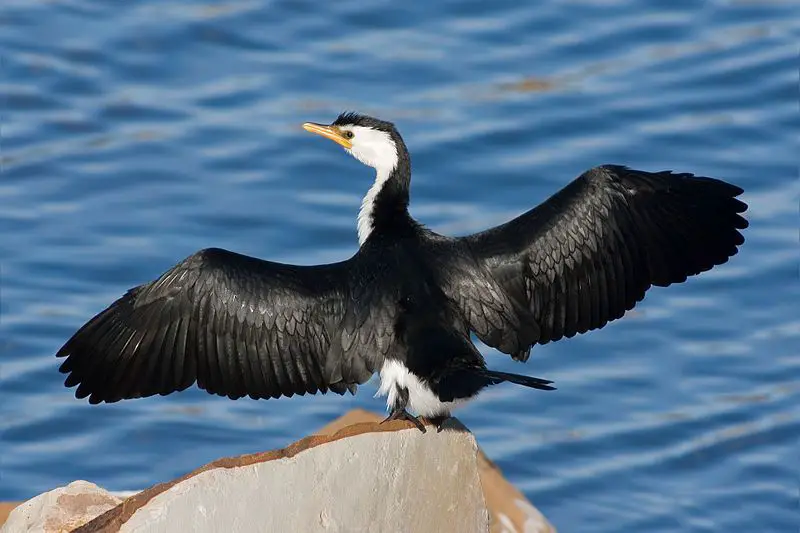
Phalacrocoracidae is a family of aquatic birds that are commonly referred to as cormorants and shags. With over 40 individual species, this family has been studied by many different ornithologists.
Over the years, various classifications of the family have been proposed; however, in 2021, the International Ornithologists’ Union adopted a consensus taxonomy that divides the family into seven distinct genera.
This taxonomy is based on the similarities and differences between the species, as well as the evolutionary history of the family. It is expected that this consensus taxonomy will provide a more comprehensive and accurate understanding of the family’s evolution and phylogeny.
| Kingdom | Animalia |
| Phylum | Chordata |
| Class | Aves |
| Order | Suliformes |
| Family | Phalacrocoracidae |
4. Terns
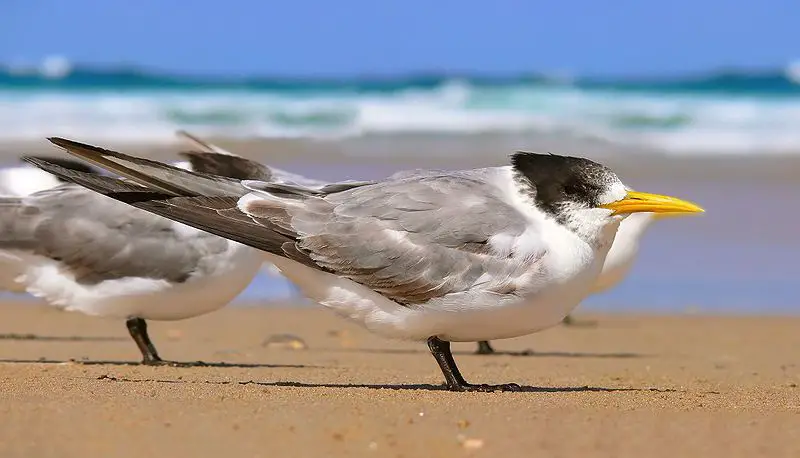
Terns are a type of seabird that is found in many places around the world. They belong to the family Laridae, which also includes gulls and skimmers. This family is further divided into eleven genera, with terns being one of them.
Terns are usually found near the sea, rivers, or wetlands, where they can easily find food and shelter. They have a variety of adaptations that help them thrive in these environments, such as their long, thin wings and their long beaks.
They can also be distinguished from other birds in the family Laridae by their distinctive black and white plumage. Terns are often seen in large flocks, soaring above the water in search of food. They feed mainly on small fish, aquatic invertebrates, and insects.
Terns are an important part of the marine ecosystem, as they help to keep the fish population in check and can help to control the spread of disease.
| Kingdom | Animalia |
| Phylum | Chordata |
| Class | Aves |
| Order | Charadriiformes |
| Family | Laridae |
5. Black-headed Gull
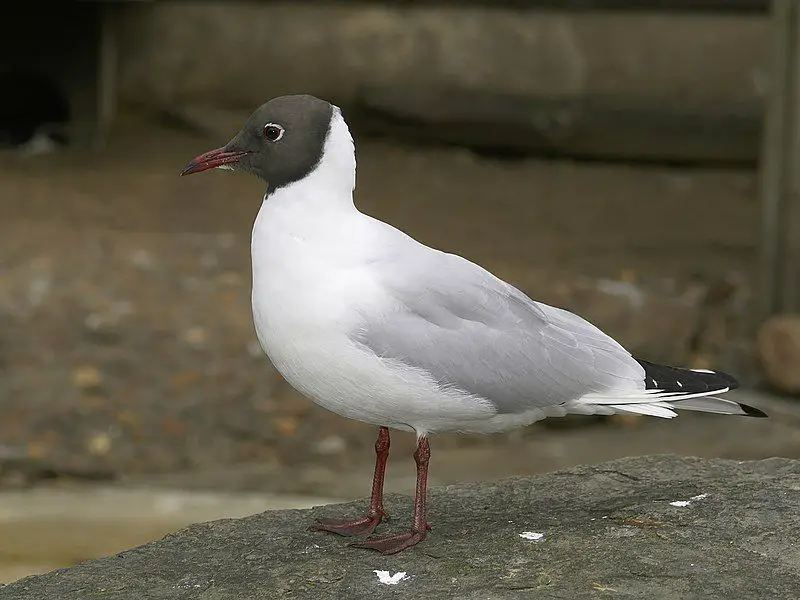
The black-headed gull is a small species of gull that is found in many areas of the Palearctic region, which includes Europe. It is also found in coastal areas of eastern Canada.
The majority of the population of this species is migratory, meaning they will fly south for the winter months to find warmer climates. However, some individuals of this species will stay in the milder westernmost areas of Europe throughout the year.
This species is a small gull, and is commonly found in many parts of Europe, and is also found in coastal areas of eastern Canada. The migratory nature of this species allows them to find food more easily in different areas during different times of year.
| Kingdom | Animalia |
| Phylum | Chordata |
| Class | Aves |
| Order | Charadriiformes |
| Family | Laridae |
| Genus | Chroicocephalus |
| Species | C. ridibundus |
6. Common Kingfisher
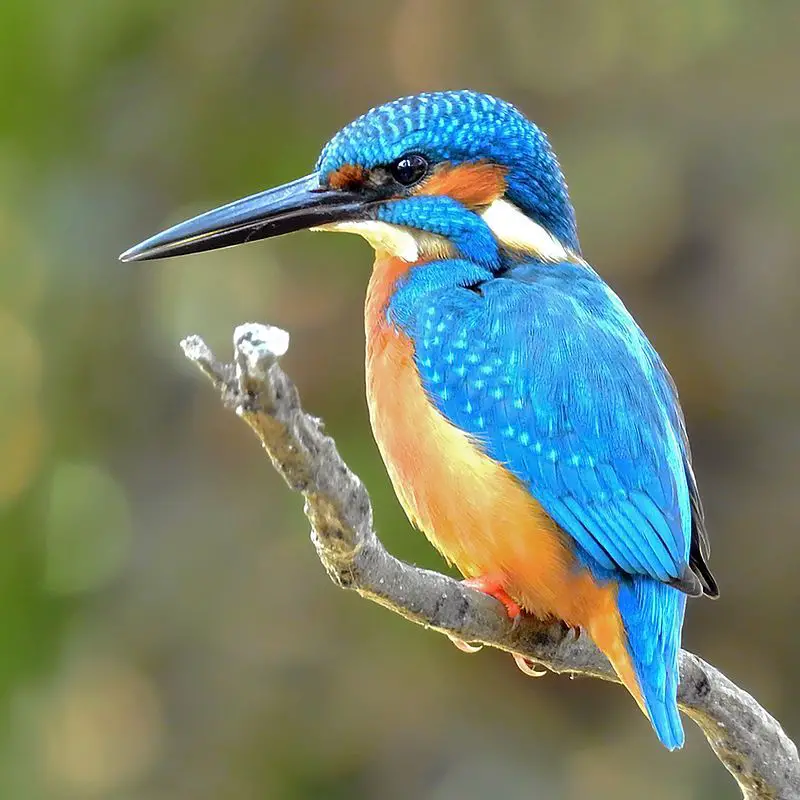
The common kingfisher is a small, colorful bird native to Eurasia and North Africa. It is commonly known as the Eurasian kingfisher and river kingfisher, and there are seven recognized subspecies across its large range.
This species is usually resident in much of its range, but some migrate from areas where the rivers freeze during the winter months. The common kingfisher is most commonly found near rivers, lakes, and other bodies of water and feeds mainly on fish.
Its striking coloring helps it stand out against its aquatic environment, and its shrill, distinctive call can be heard echoing over the water. The common kingfisher is a prolific and widespread species, and it plays an important role in its local ecosystems.
| Kingdom | Animalia |
| Phylum | Chordata |
| Class | Aves |
| Order | Coraciiformes |
| Family | Alcedinidae |
| Genus | Alcedo |
| Species | A. atthis |
7. Caspian Tern
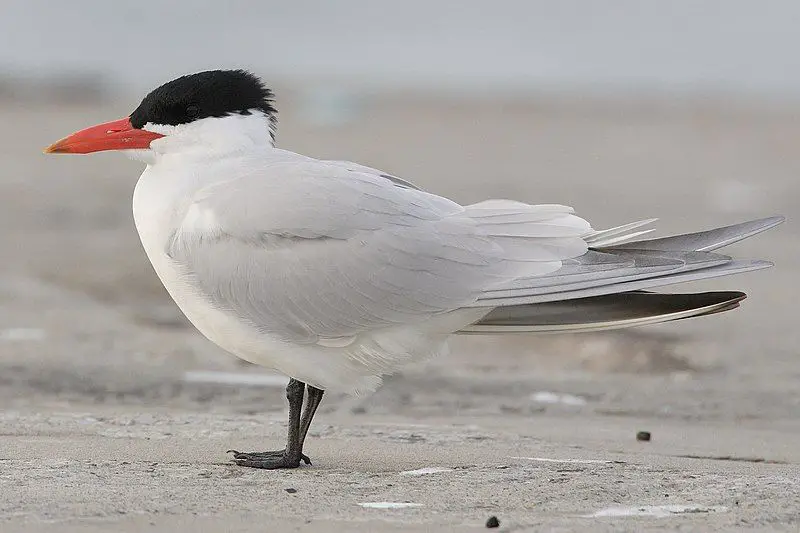
The Caspian tern is a species of tern, which is dispersed widely across the world. It is the only species of its genus, meaning that it has no accepted subspecies.
The genus of the Caspian tern is derived from Ancient Greek and Latin words, “hudros”, meaning “water”, and “progne”, meaning “swallow”. These two words combined give a perfect description of the Caspian tern, a water-dwelling bird that closely resembles a swallow.
The Caspian tern is a medium-sized bird, with a wingspan of between 99 and 126 cm. It has a white head, dark grey back and wings, and a creamy-white underside. The bird prefers to live in coastal areas, but can also be found in inland wetland habitats.
It is a migratory species, traveling to warmer climates in the winter and returning to its breeding grounds in the summer. The Caspian tern is an important species in the world, providing food and shelter for other birds, fish, and other animals.
It can also be a nuisance to humans, as it is known to feed on small fish from fish farms and on commercial fishing lines. Nevertheless, it is a species that needs to be actively protected as its population is declining due to human activities and climate change.
| Kingdom | Animalia |
| Phylum | Chordata |
| Class | Aves |
| Order | Charadriiformes |
| Family | Laridae |
| Genus | Hydroprogne |
| Species | H. caspia |
8. Great Cormorant
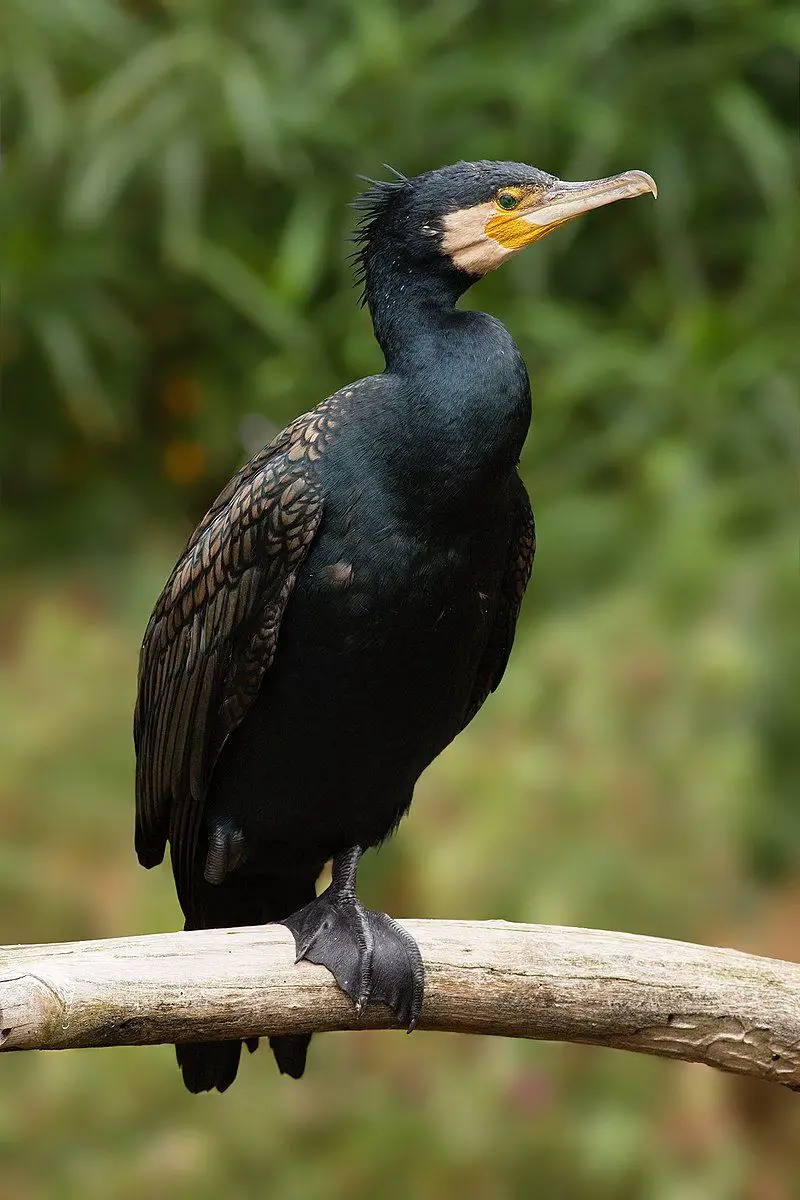
The great cormorant is a widely distributed seabird from the cormorant family. It is known by many different names across the world. In New Zealand, it is known as the black shag or kawau, while in the Northern Hemisphere, it is known as the great black cormorant.
In Australia, it is referred to as the black cormorant, and in India, it is known as the large cormorant. This seabird has a large wingspan and is mostly black or grey in color. It has a long neck and a pointed bill which it uses to feed on fish and other aquatic prey.
It is an excellent swimmer and can often be seen near the shore or in coastal waters, where it dives for food.
The great cormorant is also a social bird, often gathering in large flocks. The great cormorant is a valuable species in many parts of the world, where it is an important part of the marine ecosystem.
It is also a popular subject of photography and art, due to its striking colors and impressive size.
| Kingdom | Animalia |
| Phylum | Chordata |
| Class | Aves |
| Order | Suliformes |
| Family | Phalacrocoracidae |
| Genus | Phalacrocorax |
| Species | P. carbo |
9. Brown Booby
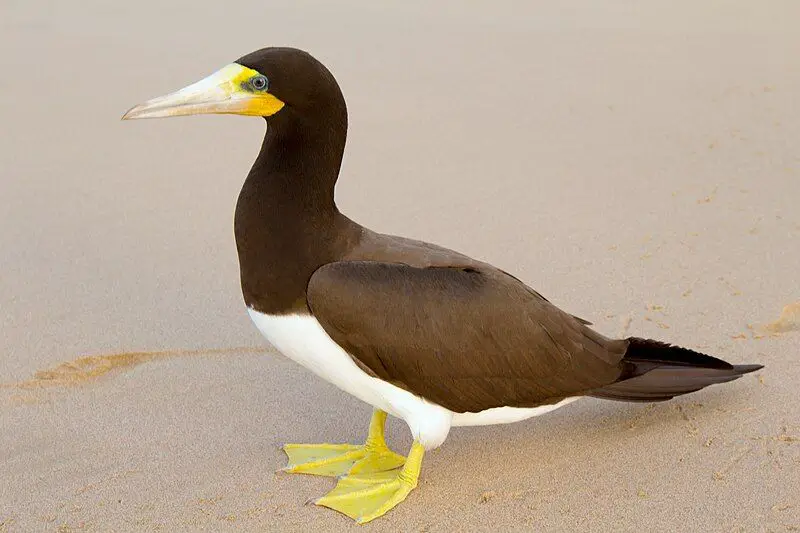
The brown booby is a large seabird that belongs to the Sulidae family, one of the most common and widespread species of seabirds in the world. It is found in a variety of tropical regions, overlapping with the range of other booby species.
It is a highly social bird, and it engages in daily commutes and foraging activities over shallow, inshore waters. The gregarious nature of this species allows them to travel and hunt in groups, making it easier to find food and defend against predators.
These birds have adapted to live near the shore by learning to dive into the water to capture fish and other prey. They are also able to fly at low heights, allowing them to navigate around obstacles and quickly find food.
The brown booby is an important species in its ecosystem, providing a food source to other animals while also helping to maintain a healthy balance of marine life.
| Kingdom | Animalia |
| Phylum | Chordata |
| Class | Aves |
| Order | Suliformes |
| Family | Sulidae |
| Genus | Sula |
| Species | S. leucogaster |
10. Razorbill
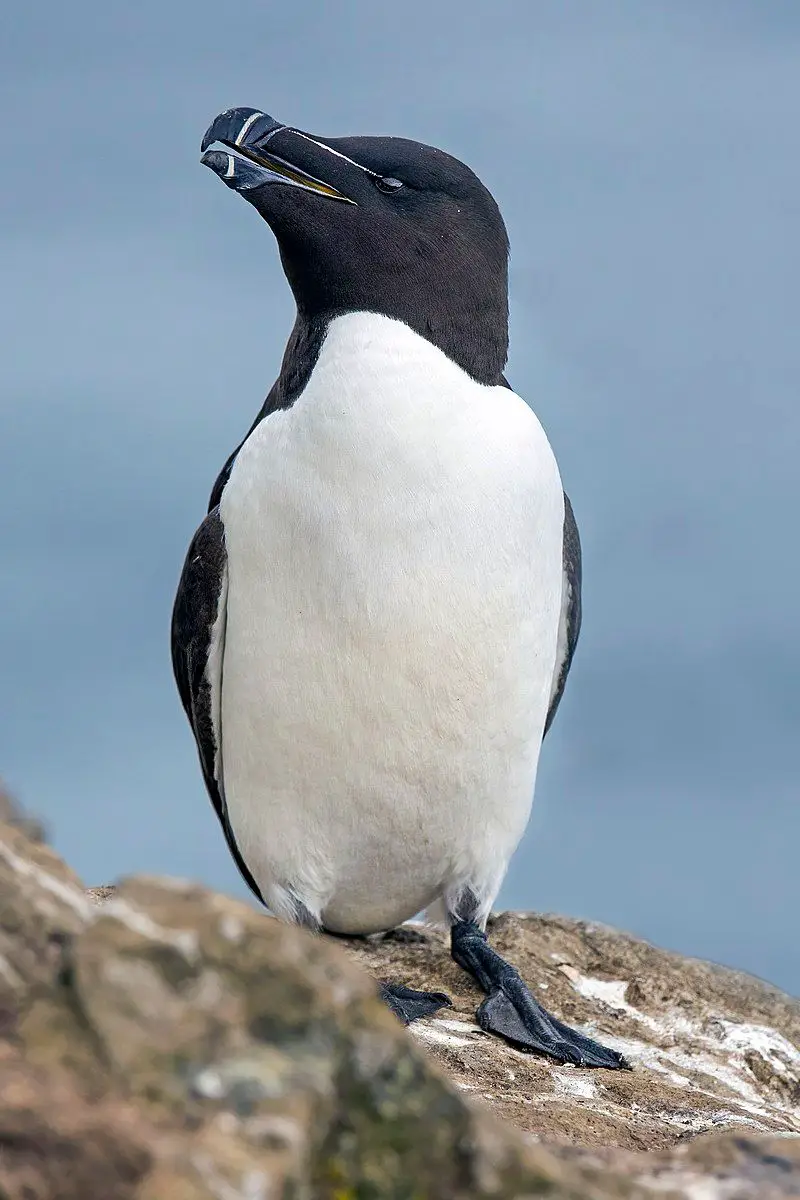
The razorbill, also known as the razor-billed auk or lesser auk, is a species of seabird that can be found in the North Atlantic. It is the only living member of the Alca genus of the Alcidae family, which is also known as the auk family.
This species is closely related to the great auk, which is now extinct. Razorbills have a distinctive black-and-white coloration, with black plumage covering the majority of their body and white feathers on their underside.
They have a sharp beak that is adapted for catching fish from the water. This species is an adept swimmer and diver and can dive to depths of up to 60 meters in search of food. They breed in large colonies on rocky cliffs and islands in the North Atlantic.
| Kingdom | Animalia |
| Phylum | Chordata |
| Class | Aves |
| Order | Charadriiformes |
| Family | Alcidae |
| Genus | Alca |
| Species | A. torda |
11. Black Guillemot
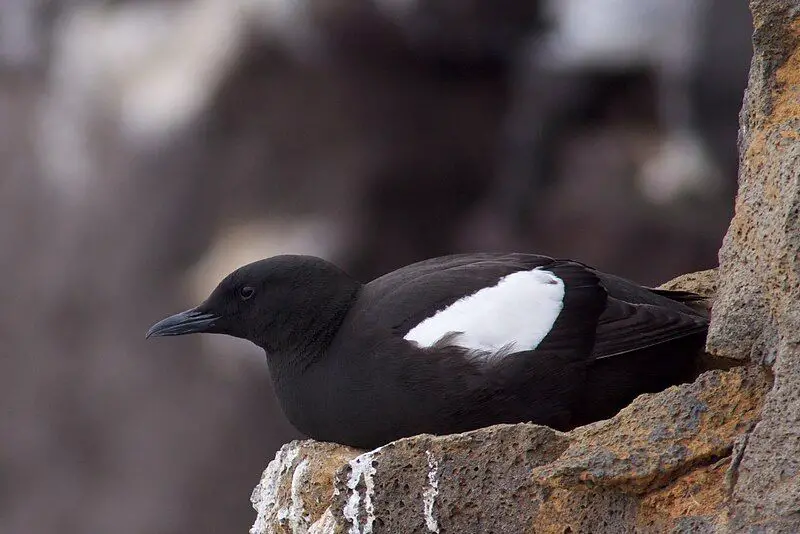
The black guillemot, also known as the tystie, is a seabird that belongs to the Alcidae family. It is found across the northern Atlantic coasts and eastern coasts of North America.
Most of the population stays in the same area throughout the year, but some of the birds from the northern regions migrate south during the winter season. The guillemot is a medium-sized seabird, with a black plumage and white at the base of its wings.
It lives and feeds in the open ocean, usually near the shore, and nests on cliff faces or rocky islands. It feeds mainly on fish, crustaceans and molluscs, which it catches by diving into the water.
The black guillemot is an important species for conservation, as its population has been declining due to human activities such as overfishing, pollution and habitat destruction.
| Kingdom | Animalia |
| Phylum | Chordata |
| Class | Aves |
| Order | Charadriiformes |
| Family | Alcidae |
| Genus | Cepphus |
| Species | C. grylle |
12. Oystercatchers
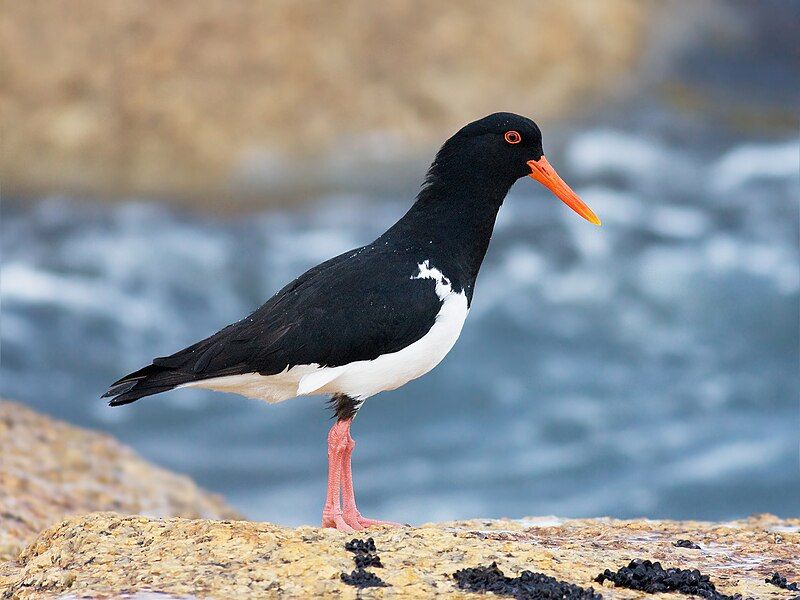
The oystercatchers are a unique group of birds found all over the world, with the exception of the polar regions and some parts of Africa and South East Asia. They belong to a single family known as Haematopodidae, and they are often found along the coasts.
Oystercatchers are a type of wader, which means they have long legs that are adapted to wading in shallow water in search of food.
They are able to find a wide variety of food, from small fish and molluscs to invertebrates such as worms and crabs. The oystercatchers are highly social birds, often seen in large groups. They have a wide variety of vocalizations that they use to communicate with each other.
The birds have a distinctive black and white plumage, with a bright red bill and yellow eyes.
They have a sharp, pointed bill that is ideally suited for prising open the shells of molluscs and eating the flesh inside. The oystercatchers are a valuable part of the ecosystem, helping to keep the population of molluscs in check.
They also provide a food source for other predator animals, such as gulls and crows. They are a beautiful and unique species and have become a symbol of coastal life in many parts of the world.
| Kingdom | Animalia |
| Phylum | Chordata |
| Class | Aves |
| Order | Charadriiformes |
| Family | Haematopodidae |
| Genus | Haematopus |
13. Lesser Black-Backed Gull
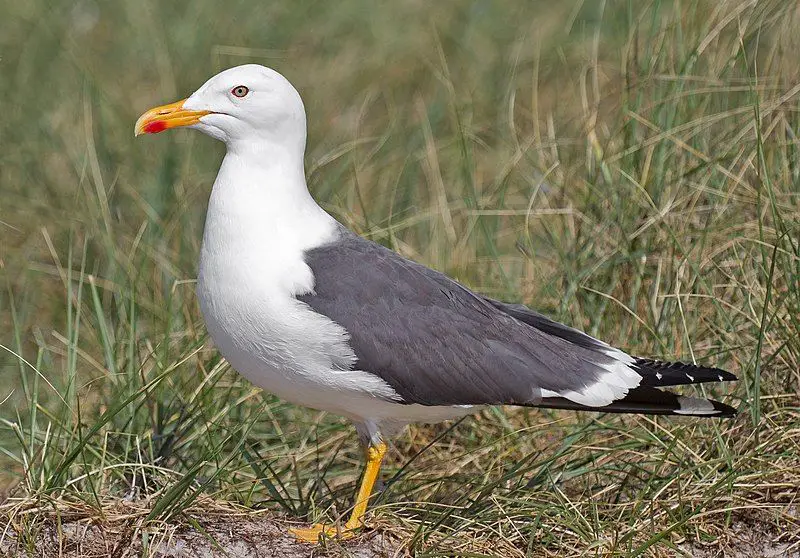
The lesser black-backed gull is a species of large gull that breeds on the coasts of the Atlantic in Europe. During the winter season, the birds migrate from the British Isles to West Africa.
In recent years, the population of lesser black-backed gulls has dramatically increased in North America, particularly in the eastern coastal regions.
What makes this species unique is that while it used to be a seasonal winter visitor, many of the birds are now observed in the area throughout the year. This indicates that the species is becoming more accustomed to the environment and has started to settle in the region.
| Kingdom | Animalia |
| Phylum | Chordata |
| Class | Aves |
| Order | Charadriiformes |
| Family | Laridae |
| Genus | Larus |
| Species | L. fuscus |
14. Common Tern
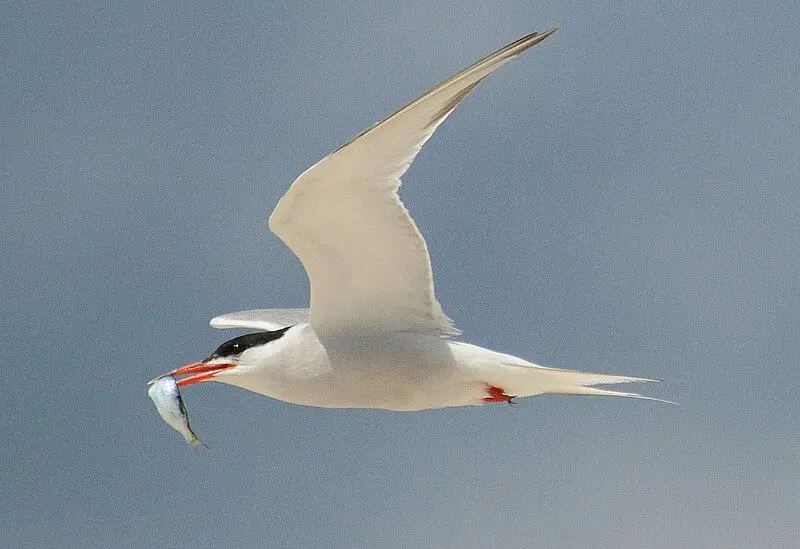
The common tern is a seabird that belongs to the family Laridae. This species has a wide and continuous range, with its four distinct subspecies living in temperate and subarctic areas of Europe, Asia, and North America.
The common tern is strongly migratory, which means it spends winters in tropical and subtropical coastal regions.
During the breeding season, the common tern can be found in more northern regions such as Europe, Asia, and North America, and in the wintertime, they migrate to more southern regions such as tropical and subtropical areas.
The common tern’s migratory behavior helps it to survive and thrive in both temperate and tropical climates. It is an important species in the food web of many ecosystems, as it feeds on small fish, crustaceans, and insects.
Additionally, it serves as an important predator of small fish and crustaceans, helping to keep populations in balance. The common tern is also an important species ecologically, as it helps to spread the seeds of plants and to disperse nutrients through its droppings.
| Kingdom | Animalia |
| Phylum | Chordata |
| Class | Aves |
| Order | Charadriiformes |
| Family | Laridae |
| Genus | Sterna |
| Species | S. hirundo |
165. Greater Flamingo
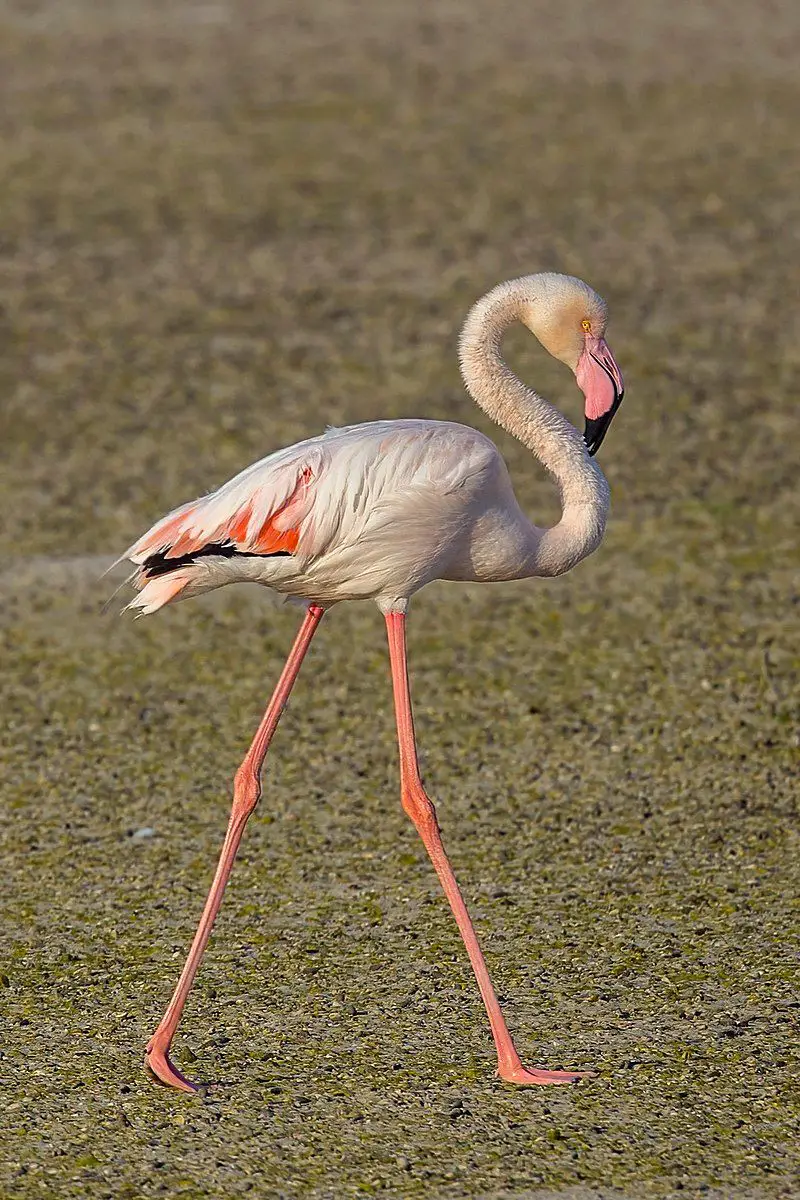
The greater flamingo is a species of the flamingo family that is widely distributed throughout the Old World. It is the largest species in its family and can be found in many different countries and regions.
In Northern and Sub-Saharan Africa, the greater flamingo is a common sight.
It is also found in the Indian Subcontinent, the Middle East, the Levant, the Persian Gulf, the Gulf of Aden, the Red Sea, and the Mediterranean countries of Southern Europe.The greater flamingo is an impressive bird, with certain populations reaching up to 1.2 meters in height and having a wingspan of up to 2.3 meters.
They have long legs and a distinctive neck which is bent in an S-shape. Generally, they are pinkish-white in color, with their feathers having a rosy hue. Their legs are often black or grey. The greater flamingo is a gregarious bird and prefers to live in large flocks.
They inhabit large shallow lakes, lagoons, marshes, and mudflats where they feed on a variety of aquatic creatures.
They have an interesting way of feeding, by using their bills to filter out small organisms from the water. The greater flamingo is an important species in its environment, as it keeps water bodies healthy by feeding on small aquatic creatures which can cause an imbalance in the ecosystem.
Furthermore, they are beautiful birds to observe and attract many bird watchers.
| Kingdom | Animalia |
| Phylum | Chordata |
| Class | Aves |
| Order | Phoenicopteriformes |
| Family | Phoenicopteridae |
| Genus | Phoenicopterus |
| Species | P. roseus |
16. White-Tailed Eagle
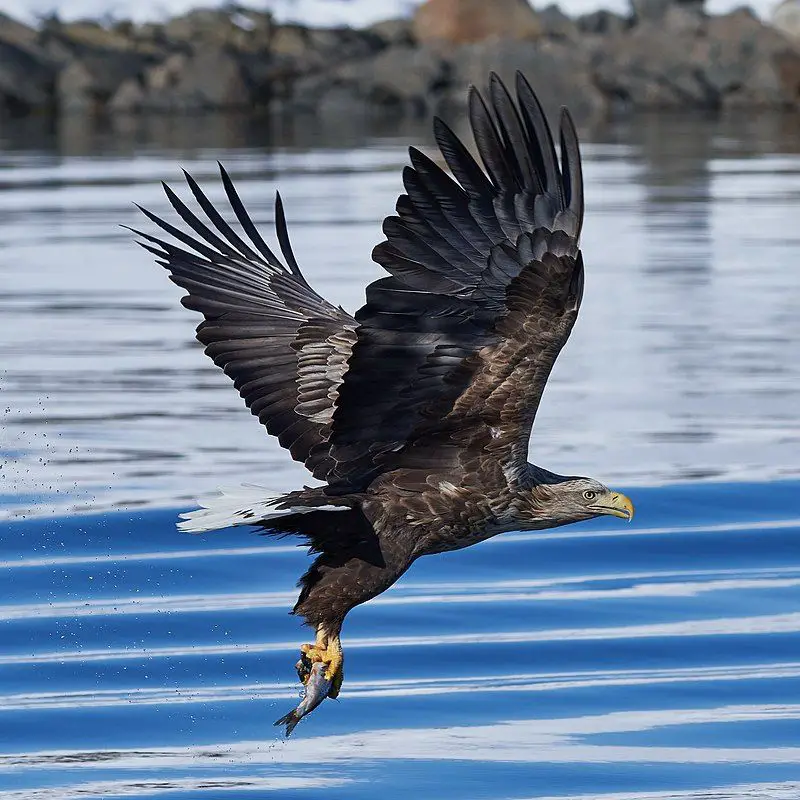
The white-tailed eagle is a very impressive bird of prey, found in temperate regions of Eurasia. It is also known as the “sea eagle” due to its habit of hunting for fish in coastal areas.
As a member of the Accipitridae family, the white-tailed eagle is related to other diurnal raptors such as hawks, kites, and harriers.
These birds of prey share many common characteristics, such as a keen eye for detail, sharp talons, and powerful beaks. The white-tailed eagle is one of the largest birds of prey, with a wingspan of up to 2.3 meters and a body length of up to 1.5 meters.
This impressive bird can be identified by its distinctive white tail and large yellow beak.
Its flight pattern is also unique, with slow, powerful strokes interspersed with brief glides. The white-tailed eagle has adapted to a variety of environments, from mountain forests to coastal bays. It feeds mainly on fish, but will also take small mammals, reptiles, and birds.
The white-tailed eagle is a protected species in many countries, due to its importance in maintaining a healthy ecosystem.
| Kingdom | Animalia |
| Phylum | Chordata |
| Class | Aves |
| Order | Accipitriformes |
| Family | Accipitridae |
| Genus | Haliaeetus |
| Species | H. albicilla |
17. Crab-Plover
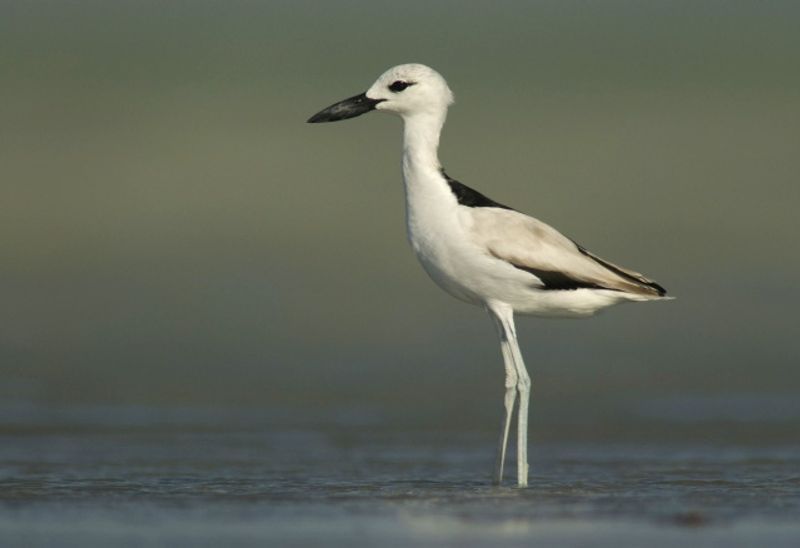
The crab-plover is a unique species of bird, belonging to an avian family of its own. It is related to the waders, a family of shorebirds that includes sandpipers and plovers, but it is distinct enough to be classified in its own family, Dromadidae.
The crab-plover is a large shorebird, with a long, thin bill and long, strong legs. It has a mottled brown, white and grey plumage and a distinctive white patch on its wings.
It can be found in coastal areas around the Indian Ocean, Red Sea and Arabian Sea, where it feeds on the shoreline on small crustaceans, molluscs and insects.
It nests in colonies on beaches, often near human settlements, and spends much of its time foraging in the intertidal zone. The crab plover is an abundant species, but its population is declining due to coastal development, hunting and the destruction of its beach habitats.
| Kingdom | Animalia |
| Phylum | Chordata |
| Class | Aves |
| Order | Charadriiformes |
| Family | Dromadidae |
| Genus | Dromas |
| Species | D. ardeola |
18. Great Black-Backed Gull
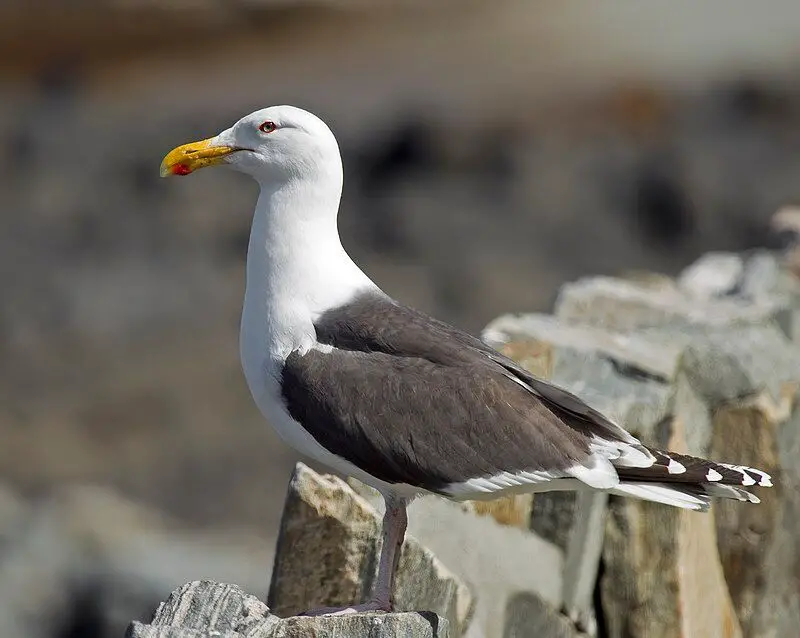
The great black-backed gull is the largest member of the gull family. This impressive bird is found along the Atlantic waterfront and is a formidable presence.
Described by the Cornell Lab of Ornithology as “the king of the Atlantic waterfront”, the great black-backed gull is both an aggressive hunter and a pirate. This means it will actively search for and hunt its prey, as well as steal food from other birds.
It is also an opportunistic scavenger, meaning it will take advantage of any food sources it can find. The great black-backed gull is known for its strength and dominance.
It is a large bird with a wingspan of approximately 55 inches, and it is often seen soaring above the coastline. Its presence is a reminder of the power of nature, and it is a fascinating species to observe.
| Kingdom | Animalia |
| Phylum | Chordata |
| Class | Aves |
| Order | Charadriiformes |
| Family | Laridae |
| Genus | Larus |
| Species | L. marinus |
19. Bridled Tern
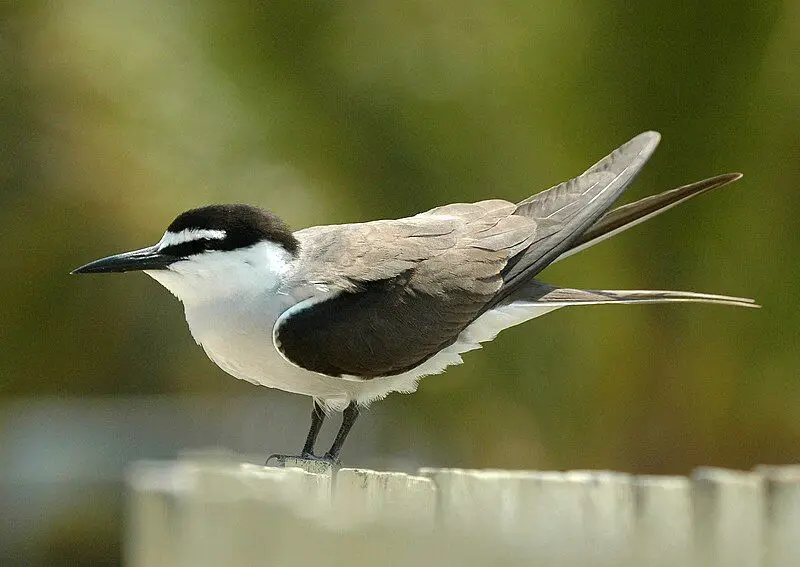
The bridled tern is a seabird that belongs to the family Laridae. It is a species native to the tropical oceans of the world and its scientific name has an Ancient Greek origin.
The genus of the bridled tern is derived from two words, onux meaning “claw” or “nail” and prion meaning “saw”, suggesting the sharpness of the bird’s beak.
The species name anaethetus means “senseless, stupid” which is likely a reference to the bird’s passive and unassuming nature. In general, the bridled tern is a relatively small and delicate seabird, with a greyish-brown colouring and a white patch behind the eye.
Its slender bill is hooked at the tip and its tail is forked, making it well-suited for its marine lifestyle.
| Kingdom | Animalia |
| Phylum | Chordata |
| Class | Aves |
| Order | Charadriiformes |
| Family | Laridae |
| Genus | Onychoprion |
| Species | O. anaethetus |
20. Sooty Gull
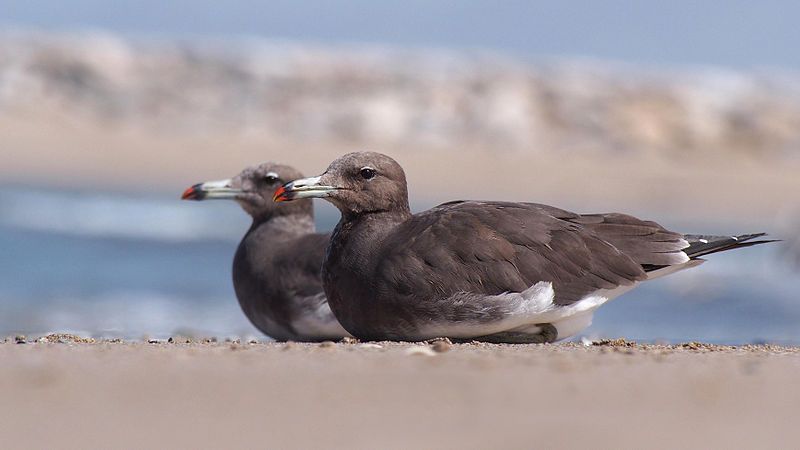
The sooty gull is a species of seabird that belongs to the family Laridae, which includes gulls, terns, skimmers, and a few other related species. It is also known as the Aden gull or Hemprich’s gull, names derived from its scientific name, Larus hemprichii.
This species is native to the Indian Ocean, and it can be found in the Arabian Sea, the Persian Gulf, the Red Sea, and the Gulf of Aden. The sooty gull is a medium-sized gull with a wingspan of up to 4.5 feet.
It has a gray-brown body and a black head and neck, with white and black wingtips. Its eyes are yellow and its legs are bright orange. The sooty gull feeds mainly on small fish, but it will also eat crustaceans, mollusks, and other marine invertebrates.
It usually forages in flocks, but it can also be seen alone or in pairs. The sooty gull nests in colonies on the ground, usually in rocky areas near the water. The nest is constructed from sticks and lined with grass and seaweed.
The female typically lays two to three eggs, which are incubated for about four weeks. After hatching, the chicks are fed by both parents and fledge within five weeks. The sooty gull is listed as a species of least concern by the IUCN, which means it is not currently threatened.
However, it is vulnerable to human disturbance, and its population is declining in some areas due to habitat degradation.
| Kingdom | Animalia |
| Phylum | Chordata |
| Class | Aves |
| Order | Charadriiformes |
| Family | Laridae |
| Genus | Ichthyaetus |
| Species | I. hemprichii |
21. Masked Booby
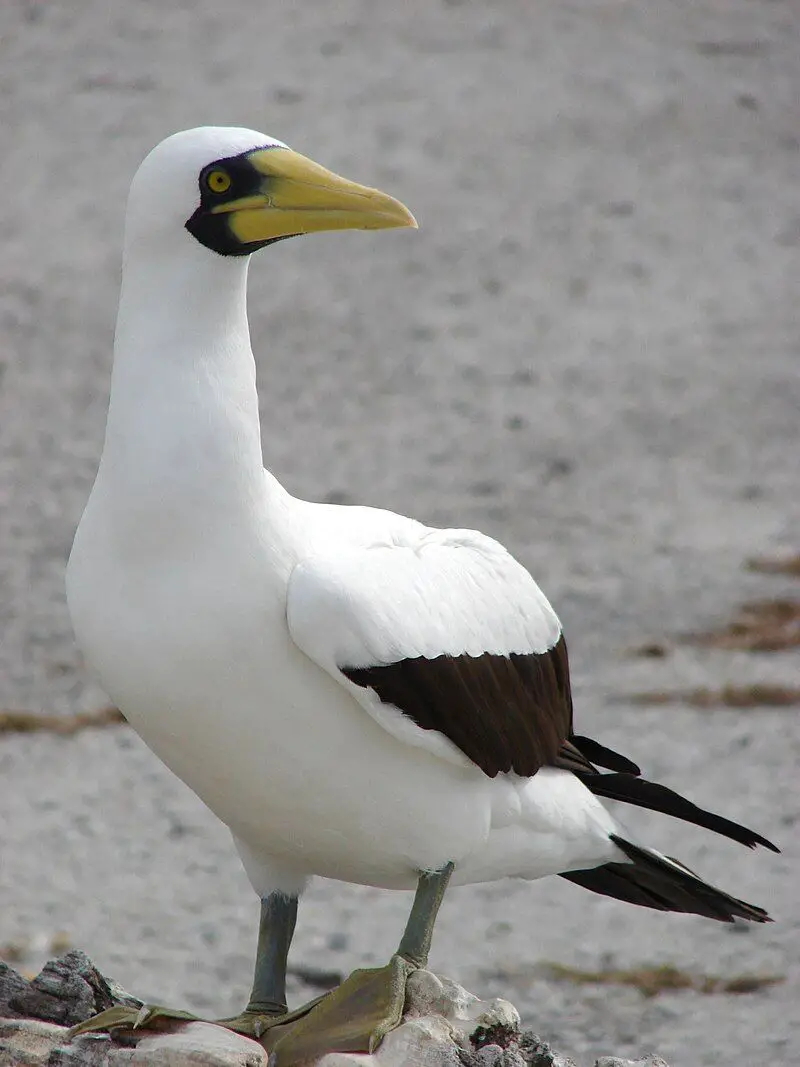
The masked booby is a large species of seabird that belongs to the booby and gannet family, Sulidae. It is also known as the masked gannet or the blue-faced booby.
This species was first described by the French naturalist René-Primevère Lesson in 1831 and is one of six species of booby that belong to the genus Sula. The masked booby has a distinctive blue-grey face and white underparts.
Its wings are long and pointed, and its tail is forked. The masked booby is a strong and graceful flier, often soaring over the ocean in search of food. It typically feeds on fish, squid, and crustaceans.
It breeds in colonies on offshore islands, and its nests are made of sticks and seaweed. The masked booby is a beautiful bird to observe in its natural habitat, and its graceful flying skills make it an impressive sight in the sky.
| Kingdom | Animalia |
| Phylum | Chordata |
| Class | Aves |
| Order | Suliformes |
| Family | Sulidae |
| Genus | Sula |
| Species | S. dactylatra |
22. Black Kite
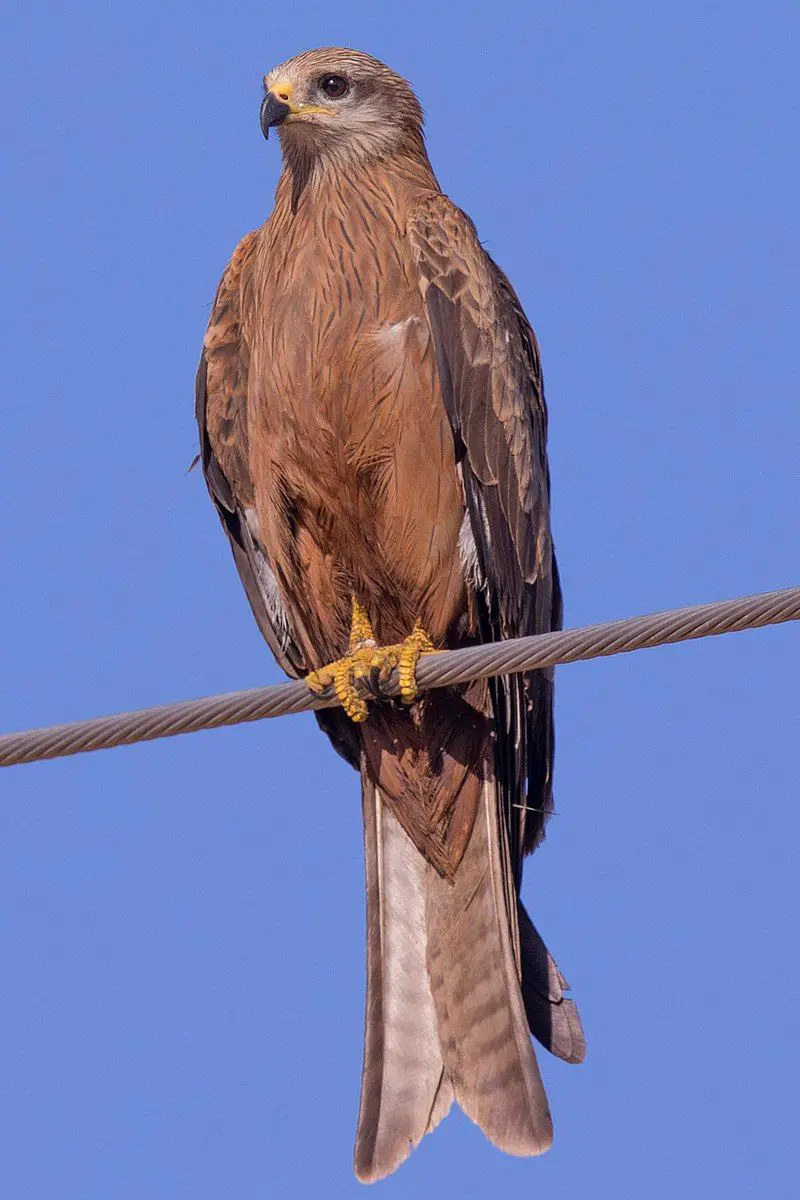
The black kite is a majestic bird of prey that belongs to the Accipitridae family, which is known for containing a variety of diurnal raptors.
It is widely known to be the most abundant species of Accipitridae in the world, but unfortunately, some of its populations have recently seen a significant decline or irregular fluctuations.
This decrease in numbers has been attributed to the destruction of habitats, lack of food, and increased hunting. The black kite is a medium-sized bird, usually about 55-60 cm in length with a wingspan of 110-130 cm.
It has a distinctive black plumage with shades of brown and grey and a white patch on its chest. Its hooked beak is typical of a bird of prey, and its long tail helps with stability when in flight.
The black kite is an opportunistic hunter, feeding mainly on small mammals, reptiles, amphibians, fish and insects. It is a solitary hunter and can also scavenge food when necessary.
The black kite breeds in tropical and temperate regions of the world and is migratory in some areas. It prefers open and semi-open habitats, including grasslands, savannas, and other open areas.
The species is considered to be of least concern by the IUCN, but as mentioned before, some of its populations have seen dramatic declines. Conservationists are working to protect the species and its habitats and to ensure its populations remain healthy.
| Kingdom | Animalia |
| Phylum | Chordata |
| Class | Aves |
| Order | Accipitriformes |
| Family | Accipitridae |
| Genus | Milvus |
| Species | M. migrans |
23. Black-Winged Stilt
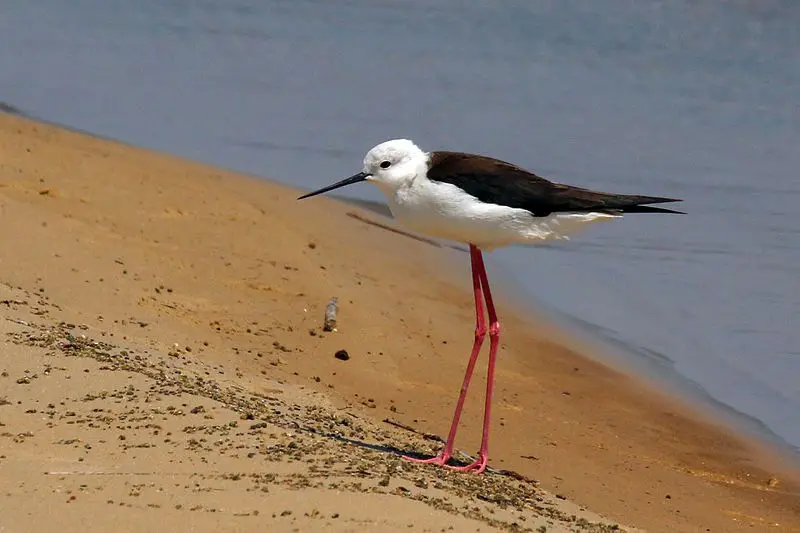
The black-winged stilt is a type of bird in the avocet and stilt family and is found across the world. It is a long-legged wader, which means it is a bird that spends its time in shallow water, looking for food. Its scientific name is H.
himantopus, and it is sometimes considered to be a single species that is found in almost every part of the world. This bird is a medium-sized wader, with long pink legs and a black and white patterned body.
Its wings are black, and its head is white with a black line running from the eyes to the back of the neck. Its long legs are adapted for intense wading and foraging in mudflats and shallow lakes.
The black-winged stilt feeds mainly on insects, small crustaceans, and other invertebrates, but will sometimes take small fish as well. It is an important species for wetland areas, as it helps to keep the areas clean and healthy by eating these small creatures.
| Kingdom | Animalia |
| Phylum | Chordata |
| Class | Aves |
| Order | Charadriiformes |
| Family | Recurvirostridae |
| Genus | Himantopus |
| Species | H. himantopus |
Conclusion
The Red Sea is home to a variety of birds, from seabirds to migratory birds.
These birds play an important role in the local ecosystem, providing food sources for other animals, pollinating plants, and helping to maintain a healthy balance of species in the area.
Despite the challenges posed by the changing climate, the birds of the Red Sea continue to thrive and provide important benefits to the region.